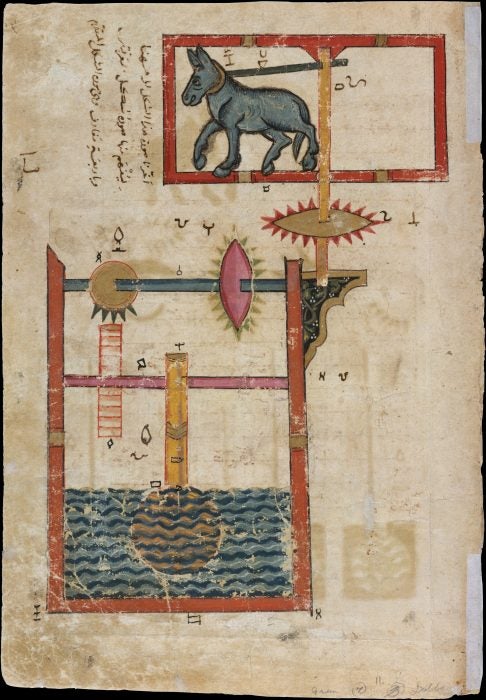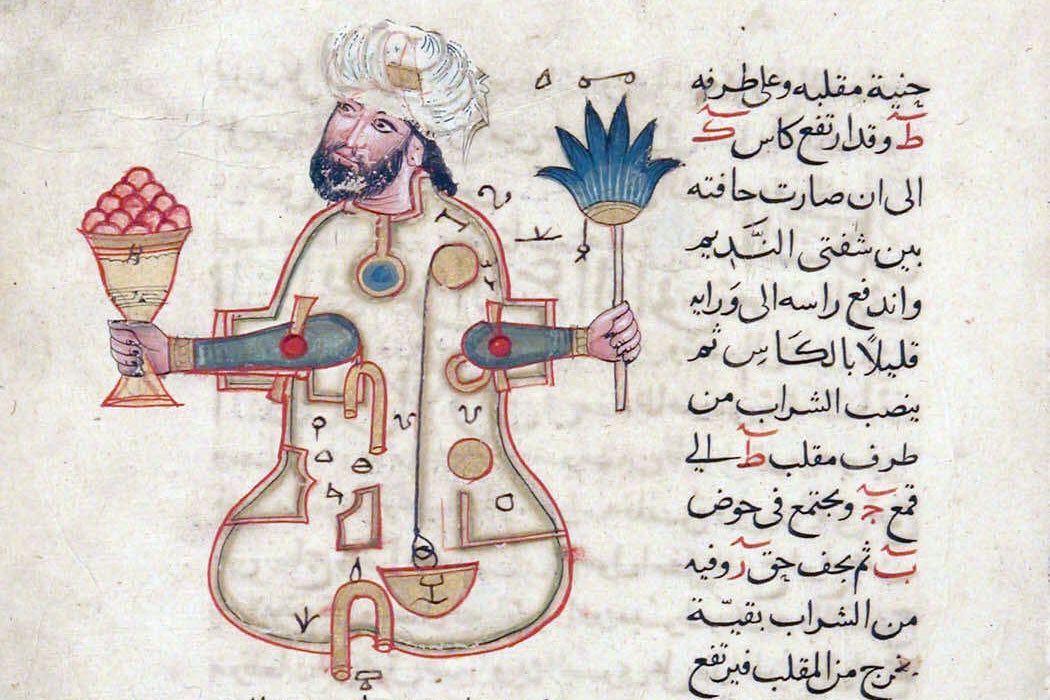Walking into the throne room of the palace of Constantine VII, visitors were treated to an elaborate special-effects spectacle. First, they passed a golden tree, with gilt leaves fluttering and branches bedecked with twittering golden birds. Next, they came to the throne, framed by two gilded lions, their tails thumping the ground. The lions opened their mouths and roared, as if sounding their approval for the emperor’s rule. The emperor’s throne began to rise off the ground, soaring to the ceiling of the hall, where he towered over his astonished visitors.
The Byzantines called this device “the throne of Solomon,” and its features were meant to evoke the mythic might of King Solomon, who ruled with the will of the Divine, commanding both natural and supernatural forces. This is a common thread in the history of automata: Although automatic devices are marvels of technology, in practice they are often used to evoke the miraculous.
Want more stories like this one?
This theme can be seen in one of the most iconic moments of Roman history, Mark Antony’s famous oration to the mob. Shakespeare immortalized Antony’s speech with the lines “Friends, Romans, countrymen,” but perhaps more striking than the words was the automata Antony used to illustrate them: A wax Caesar, rising from his deathbed and turning, slowly, to display his twenty-three bleeding wounds to the crowd. It was this sight, in part, that spurred the onlookers to a bloody riot. There is a whiff of the supernatural here: The murdered dead rises to demand vengeance. Although it is just a trick, it still makes you shiver.
Not all automata were meant to unsettle. More often, they were intended to delight and entertain. In medieval Cairo, they were a common feature of palaces—Al-Afdal Shahanshah, a Fatimid vizier, adorned his wine-hall with statues of singing girls, automata carved from camphor and amber that bowed when he entered the room and straightened up again when he took his seat.
One of the most delightful and influential works on automata is The Book of Knowledge of Ingenious Mechanical Devices, by Ismail al-Jazari. Illustrated in rich jewel tones, the whimsical, intricate devices of this book act as microcosms, little worlds populated by miniature scribes, singers, dragons, elephants, and phoenixes, all interacting in Rube Goldberg chains.
Al-Jazari’s hand-washing device, for instance, looks like a tower with a bejeweled peacock perched on top. The peacock pours fresh water from its beak into a dish, triggering a door to swing open, which reveals a mechanical servant offering a dish of soap.
Al Jazari’s work was tremendously influential in the evolution of automata, in Europe as well as the Middle East. Table fountains, a popular medieval style of automaton, positively overflow with Jazari-like whimsy. Consider the table fountain now housed in the Cleveland Museum of Art. With its three layers of gold turrets and battlements, it looks rather like a Gothic wedding cake. Grotesques frolic over the colorful tiles on its sides. When it is in motion, water burbles up through the central tower, then gushes down through grimacing gargoyle mouths. These streams spin water wheels, ring silver bells, and fill the air with the sweet scent of rosewater.
Although table fountains were tremendously popular (Anne Boleyn presented one to Henry VIII that featured three nude woman with water pouring from their breasts), this is the only surviving example. The rest have been lost, melted down into coin or scrapped and repurposed as parts of monstrances and reliquaries. According to legend, the Cleveland table fountain survived only because it was buried in the palace gardens of Constantinople and unearthed centuries later.
Although that story is probably apocryphal, it echoes a genre of legends that feature automata lost underground. After the fall of Rome, tales spread through Europe that the treasures of the empire endured in great hoards beneath the earth. Whole cities of treasure were hidden under hills, guarded by golden automata.

The automata are both the guardians and the embodiment of the lost treasure of Rome—gold brought to life and set to the task of watching over itself. The empire is dead, but the machinery of empire chugs on, serving no one but the dead.
There is a similar tale, “The City of Brass,” which comes from The Thousand and One Nights. Travelers happen upon an abandoned city stranded in the desert. The city was built by King Solomon, and was once a beautiful, thriving metropolis. But some disaster has struck the place. The streets are filled with the bodies of the dead inhabitants, miraculously preserved. The only movement comes from automata, simulacrums of people, still moving in the courses the city’s inhabitants set them on long ago.
The travelers find their way to the palace at the center of the city. Entering, they come to the throne room. The queen is still sitting on her throne. Her eyes are blinking, and her cheeks are flushed. But she does not seem to see them, or respond to what they say. She too is a corpse, given the semblance of life—quicksilver had been poured behind her eyes to make them move.
There is a mirror here to Mark Antony’s wax Caesar, the automaton that, for a moment, seemed to bring the dead back to life. But instead of machinery made lifelike, here we see the human body converted into mute, lifeless machinery. Centuries before the computer, these automata pushed the uncanny boundary between human and machine. Our anxiety and our excitement about the prospect of artificial life is not so new. It is part of a thread that stretches back through centuries of thought, invention, and folklore.







